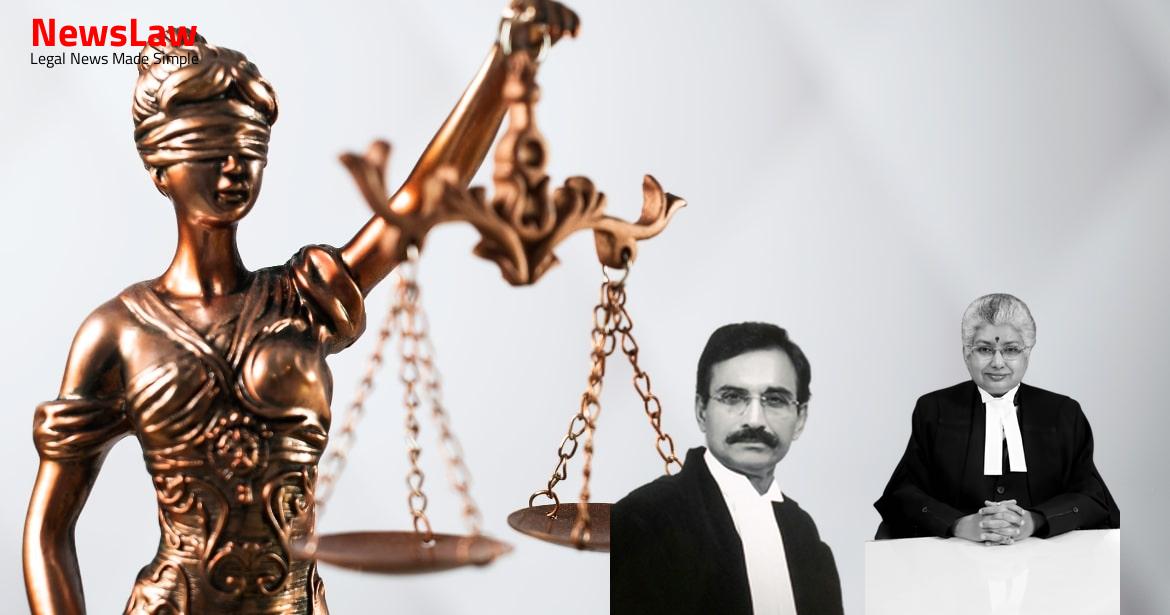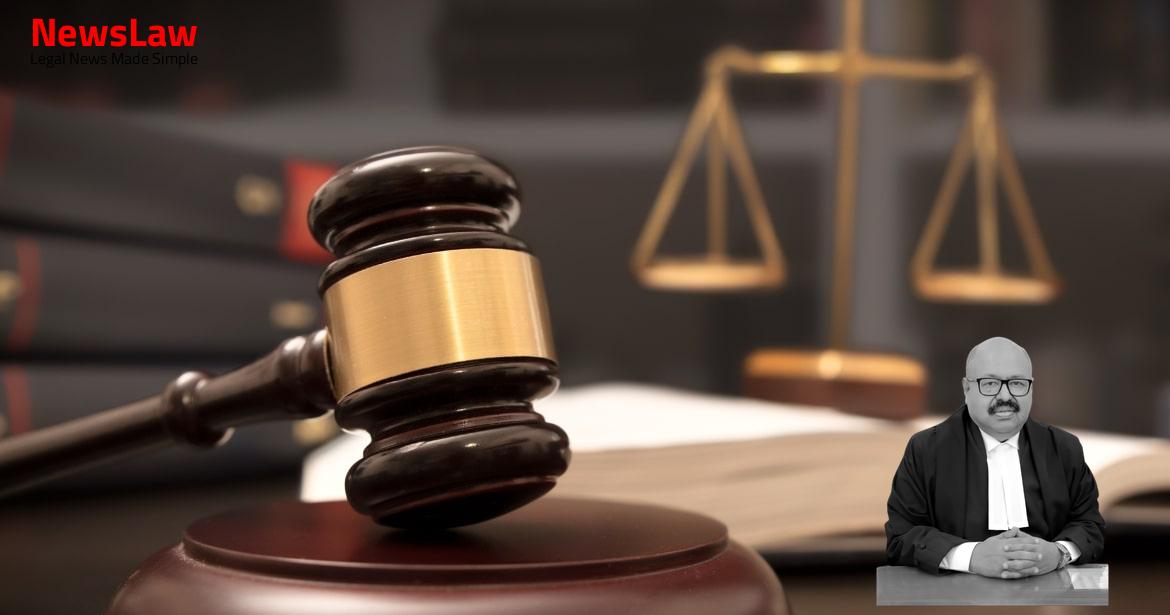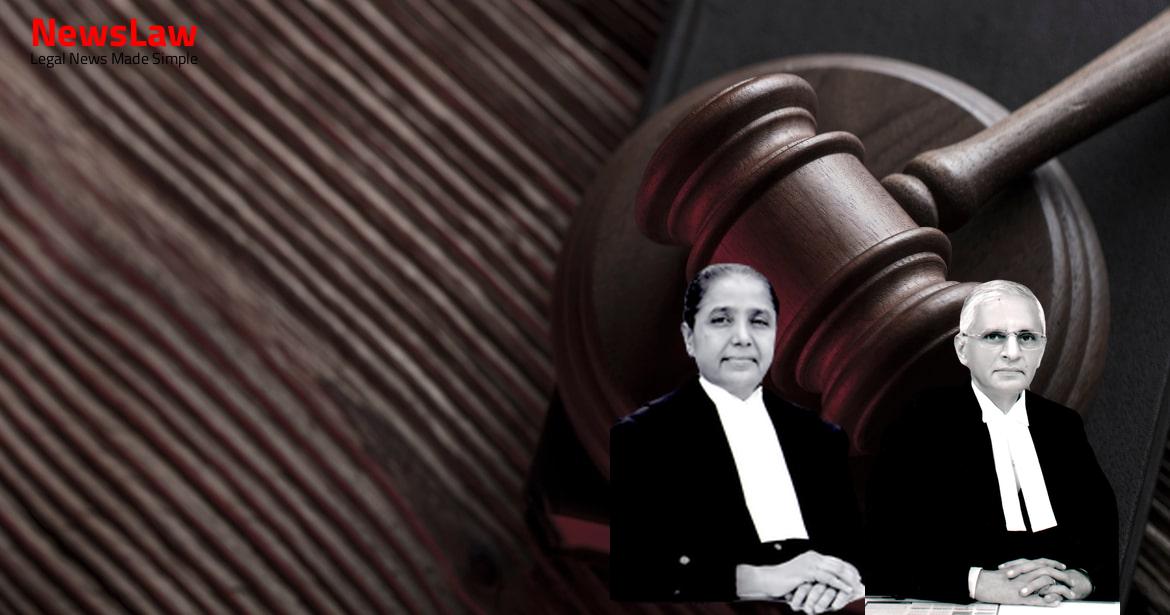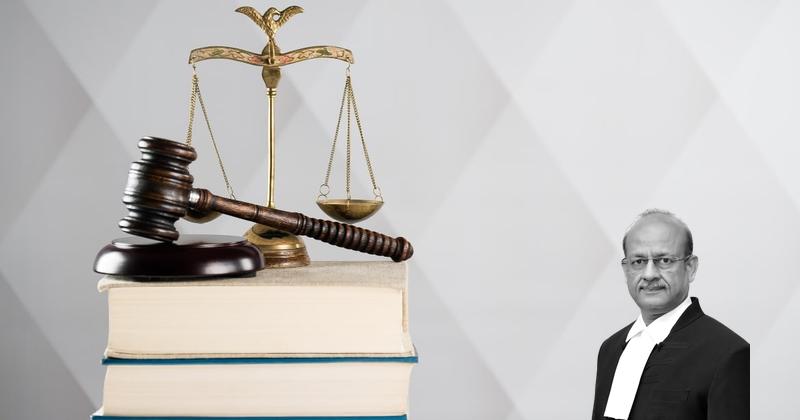Explore the in-depth legal analysis conducted by the courts in a capital punishment case, focusing on witness credibility, evidence evaluation, and the potential for the convict’s reformation. Learn how the Supreme Court reviews the trial and appellate court judgments to ensure a fair and just outcome. Stay tuned for insights into the complexities of sentencing and the balancing of mitigating and aggravating circumstances in the quest for justice.
Facts
- The trial judge found the appellant guilty of committing the offences he was charged with.
- The trial judge awarded death sentence for the offences under Section 302 of the IPC and 7 years’ rigorous imprisonment each for offences under Sections 201 and 506-B of the IPC.
- The High Court confirmed the death penalty awarded by the trial judge.
- A reference was made to the High Court under Section 366 of the Cr.P.C. for confirmation of the death penalty.
- The appellant’s appeal against the conviction and sentence was dismissed by the High Court.
- The appellant has now appealed to the Supreme Court challenging the judgment and order of the High Court.
- Deceased Devki Prasad resided in village Pur with his brother deceased Thakur Das, wife Kiran Patel, daughter Urmila, sons Kamlesh and deceased Akhilesh, and Kisiyabai, mother of the appellant.
- The prosecution alleges that the appellant assaulted Devki Prasad with an axe while he was guarding his crops in the field at night.
- FIR was registered based on the complaint of Kiran Patel (PW-1) immediately after the incident.
- Appellant denies charges, claiming false implication by Kiran Patel to acquire property.
- Charges framed against the appellant under Sections 302, 201, and 506 Part-II of the IPC.
- Previous enmity between the appellant and the deceased is noted.
- Threats were allegedly made by the appellant during the assault.
- Incident took place on 11 October 2015, resulting in the deaths of Devki Prasad, Thakur Das, and Akhilesh.
- The case was committed to the Sessions Judge after the filing of the charge-sheet.
- Witnesses include Kiran Patel (PW-1), Urmila (PW-2), and Kamlesh (PW-3).
Also Read: Presumption of Genuine Endorsements in Cheque Case
Arguments
- Defense counsel submits material contradictions in testimonies of prosecution witnesses.
- Counsel argues that due to the gravity of the death penalty, reappreciation of the evidence by the Supreme Court is necessary.
- Reference made to judgments in various cases regarding death penalty.
- Argument against the imposition of the death penalty on the same day as the conviction.
- Importance of allowing time for the accused to present mitigating circumstances before sentencing, citing relevant case law.
- Defense contests the reliability of the prosecution’s timeline of events.
- Defense counsel challenges the credibility of key witnesses presented by the prosecution.
- Absence of crucial witnesses like Kisiyabai highlighted by the defense.
- Question raised regarding withheld witness statements.
- Contention that the evidence against the appellant is fabricated and lacks credibility.
- Argument for considering the possibility of the appellant’s reformation.
- Critique of the prosecution’s handling of witness testimony and evidence.
- Defense counsel raises doubts about the reliability of the Serology Report.
- Focus on the need for evidence to establish guilt beyond a reasonable doubt before imposing the death penalty.
- Observations on the accused not having prior criminal record and the need for a fair consideration of evidence.
- Doubt cast on the timing of the incident and the deceased’s last meal.
- Defense points out inconsistencies in witness accounts and the importance of ocular evidence.
- Defense challenges the relevance of the axe recovery in the case.
- Criticism of the trial court and High Court’s evaluation of evidence.
- Emphasis on the defense that recovery of the axe under Section 27 of the Evidence Act is not substantial evidence.
- Argument against implications drawn from the sequence of informing witnesses before the police.
- The respondent argued that the brutal nature of the attack justifies the death penalty awarded by the trial court and confirmed by the High Court.
- She relies on the judgment in the case of Ravi s/o Ashok Ghumare v. State of Maharashtra to support her position.
- In response to the argument, Shri Hariharan emphasized the need for relevant material to be presented to the court when considering the appropriateness of the death penalty.
- He mentioned that an affidavit from close relatives and a prison conduct certificate have been submitted to demonstrate that the appellant’s behavior does not warrant the death penalty. He cited the judgment in the case of Rammi alias Rameshwar v. State of Madhya Pradesh to support this point.
- The respondent highlighted the brutality of the murder, involving the killing of three blood relatives, as a factor that justifies the imposition of the death penalty.
Also Read: Medical Negligence and Compensation: A Landmark Decision
Analysis
- Witness testimonies should be credible and trustworthy, even if suffering from minor discrepancies.
- Normal discrepancies in witness accounts are due to errors of observation, memory lapses, mental disposition, shock, and horror at the time of the incident.
- It is the duty of the court to separate falsehood from truth in each case.
- Appellate courts should give due weight to the evaluation of evidence by the trial court.
- Inconsistencies in prosecution evidence should not be exaggerated.
- Eyewitness credibility should not be undermined by medical opinions suggesting alternative possibilities.
- Rehabilitation of convicts is a complex process involving social reintegration.
- Trivial discrepancies or inconsistencies should not overshadow the core elements of the case.
- Appellate courts should not easily reject evidence due to variations or infirmities in trivial details.
- Evaluation of evidence should consider the probative value, inherent consistency, and credibility of testimonies.
- Rustic witnesses are likely to have inconsistencies due to exhaustive cross-examinations.
- Rustic witness testimonies should be appreciated as a whole, considering the nature of their background and social context.
- Ocular evidence is crucial and should be evaluated independently of medical evidence.
- Minor variances between medical and ocular evidence are not substantial if the ocular evidence is cogent and credible.
- Court must scrutinize the trial process and ensure a fair opportunity for the accused to present their case, especially regarding the question of sentencing.
- Rustic witnesses are not expected to remember every detail, especially after a distressing incident.
- Evidence should be evaluated based on its general tenor and the witness’s performance in the witness box.
- Mitigating circumstances include the probability of the accused being reformed and rehabilitated.
- Bachan Singh case highlighted the necessity of considering reformation or rehabilitation of the convict in the sentencing process.
- Courts must earnestly consider the probability of reformation and rehabilitation before awarding the death sentence.
- Prosecution has the duty to prove that the convict cannot be reformed or rehabilitated.
- Both the crime and the criminal are equally important in the sentencing process.
- Human dignity should be considered for the criminal regardless of the crime committed.
- Brutality of the crime is not the sole criterion in deciding the rarest of rare cases.
- The state of the criminal’s mind, socio-economic background, etc., should also be considered in sentencing.
- Death sentence is an exception, and life imprisonment is the rule.
- Courts should consider a balance of mitigating and aggravating circumstances in sentencing.
- The State has not provided evidence against the reformation or rehabilitation of the convict.
- Appellant’s background is rural and economically poor.
- Affidavits of family members and Jail Superintendent’s report show satisfactory conduct during incarceration.
- Imposition of death sentence is not imperative as there is a possibility of reformation and rehabilitation.
- Sentence imposed is converted from death to life with rigorous imprisonment of 30 years.
- First offence committed by the appellant, considered heinous but not a hardened criminal with no criminal antecedents.
Also Read: Remand of Writ Petition for Restoration and Decision on Merits
Decision
- Partly allowed the appeals
- Decision is in favor of the appellant on some points
- Certain aspects of the appeals were successful
Case Title: BHAGCHANDRA Vs. THE STATE OF MADHYA PRADESH (2021 INSC 851)
Case Number: Crl.A. No.-000255-000256 / 2018



